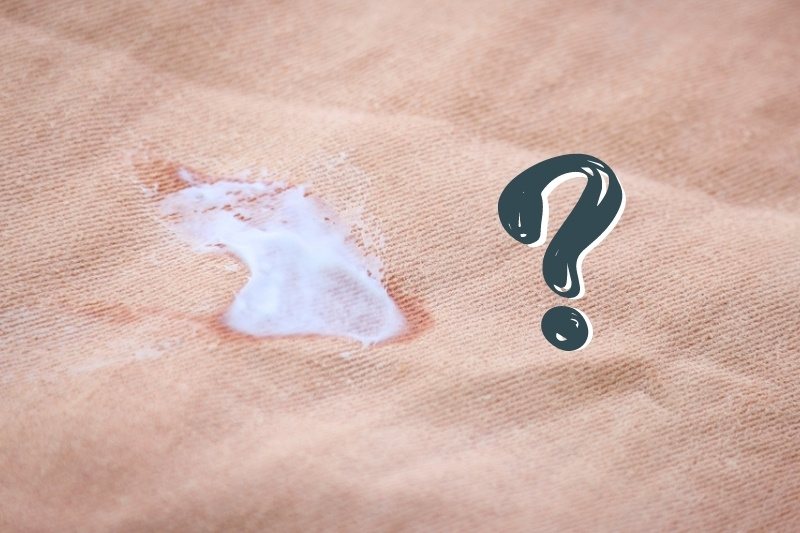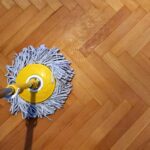Woodworking projects can be immensely satisfying, but they often come with the downside of accidental splatters of wood glue.
Whether you’re a seasoned woodworker or a DIY enthusiast, getting wood glue on your clothes is easily done.
The good news is that removing wood glue from fabric is possible with the proper cleaning techniques and a little patience!
In this guide, we’ll teach you how to get wood glue out of clothes using several different methods: four homemade cleaning solutions and two that use commercial stain removers and chemical solutions.
How Do You Get Wood Glue Out of Clothes?
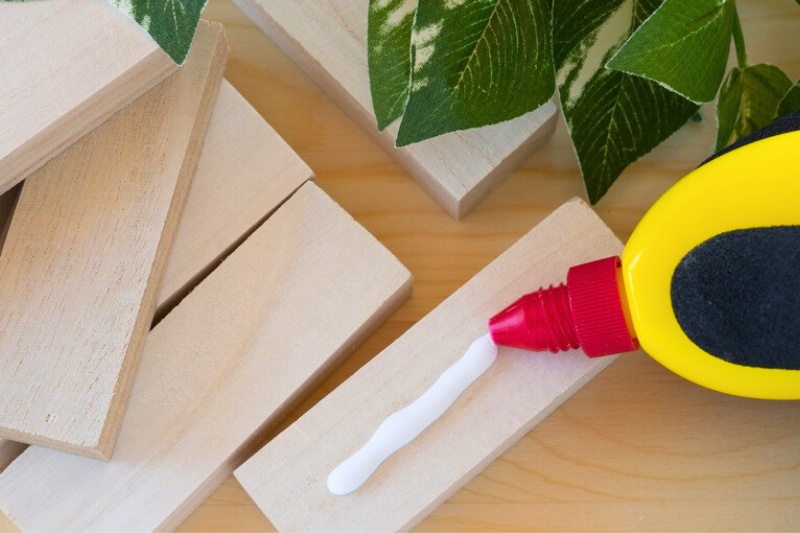
Various techniques can be employed to get wood glue out of clothing, including methods that use both homemade and commercial cleaning solutions.
Regardless of which you use, the basic stain removal method is the same. However, there are a few things worth noting before commencing the stain-removal process:
- Gently dab or blot the stain instead of rubbing it to avoid pushing it deeper into the fabric.
- Pretreat the stain and wash the clothing quickly to prevent it from setting in.
- Air dry stained clothes if possible to avoid setting the stain further.
With this in mind, familiarise yourself with the following process, then choose from one of our six stain removal methods to try at home:
Step 1: Act fast and scrape off the excess glue
The key to successfully removing wood glue from clothing is to act promptly. The longer the glue sits on the fabric, the harder it becomes to remove.
As soon as you notice the wood glue stain, attempt to remove the excess glue without spreading it further.
To start the cleaning process, carefully scrape off as much excess wood glue as possible using a blunt knife or the edge of a spoon.
Be gentle to avoid tearing or damaging the fabric. The goal is to remove as much dried or excess glue as possible.
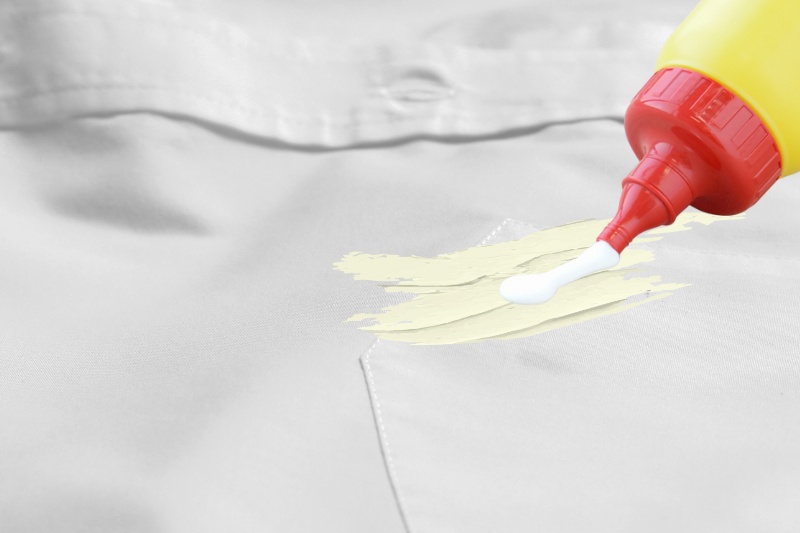
Step 2: Let the glue dry and peel it off
Having removed all the excess wood glue, allow the remaining glue on the fabric to dry completely. Attempting to remove wet glue can spread it further and make the stain more difficult to tackle.
Once the glue has dried, gently peel or pick off any remaining dried glue.
Always use your fingers when picking the remaining glue from your clothes. Using sharp objects may seem like a wise decision, but they can easily damage the fabric.
Step 3: Pre-treat the wood glue stain
A reliable and effective pre-treatment can make a big difference when dealing with tough wood glue stains on clothes. This is where you can choose either a homemade cleaning solution or a commercial cleaner.
Your options are:
- Washing up liquid and water
- Acetone (nail polish remover)
- White vinegar and water
- Amyl acetate cleaner
Precise instructions on using each stain remover are explained later in the article. But regardless of your choice of cleaner, apply the stain remover directly to the wood glue stain, covering it completely.
Gently brush the agent into the fabric using a soft-bristled brush or toothbrush. Then, let the stain remover sit on the wood glue stain for the recommended time.
Alternatively, you can remove wood glue stains using an iron and ironing board. This method follows a slightly different process, which you can discover more about below.
Step 4: Wash your clothes
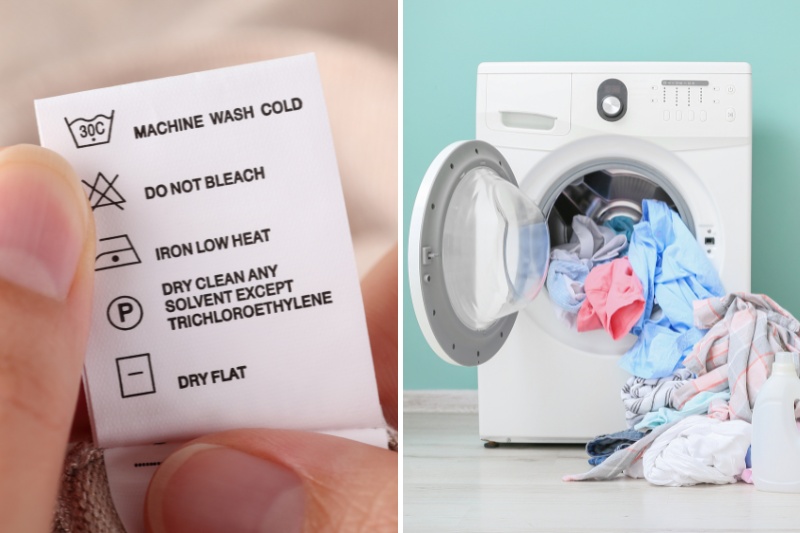
After pre-treating your wood-glue-stained clothes, it’s time to wash them.
Before washing, read the care label on the clothing carefully to ensure you’re washing it correctly. This will help you to avoid causing any further damage to the item.
Then, put the wood glue-stained garment into the washing machine with the rest of your laundry and choose a suitable laundry detergent for your wash.
To increase your chances of successfully removing the wood glue, use the hottest water setting the clothes can withstand.
Hot water is vital in softening and breaking down the wood glue, ensuring it is completely removed from your clothes.
What Removes Wood Glue From Fabric?
Homemade cleaning solutions
Homemade cleaning solutions are an excellent option if you prefer a more gentle approach to removing wood from clothes. They use everyday household ingredients you likely already have lurking in your cupboards, making them an incredibly convenient option, too.
Method 1: Washing up liquid and water
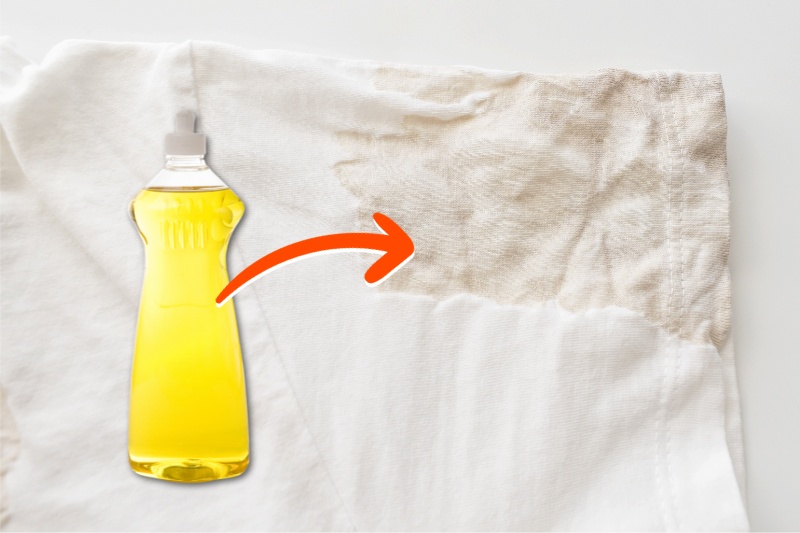
Although an unconventional stain remover, some of the best washing-up liquids can be effective stain removers. The amount of product you need to use depends on the size of the stain.
- Apply a small amount of washing-up liquid directly to the wood glue stain.
- Gently rub the fabric together to work the soap into the stain, or use a soft-bristled brush or toothbrush to work the product into the stain.
- Let it sit for around five minutes to allow the soap to penetrate the glue.
- Rinse the fabric with cold water.
- Repeat the process or try another method if the stain persists.
- Wash the garment in the washing machine as per the care instructions.
Method 2: Acetone (nail polish remover)
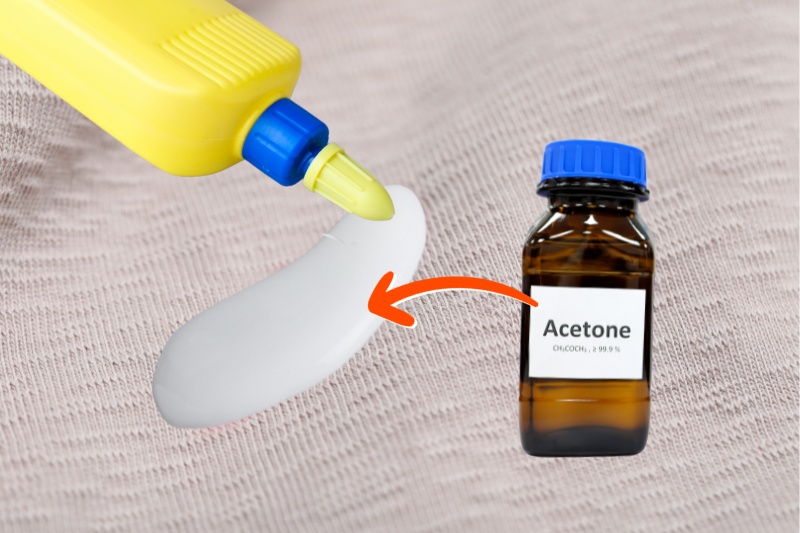
Acetone, a common ingredient in nail polish removers, is known for its ability to dissolve various types of adhesives, including wood glue.
However, caution is crucial when using acetone on fabric, as it can be harsh and cause damage.
If you want to try the acetone method, always perform a patch test on a small, inconspicuous area of the fabric to ensure compatibility and prevent any adverse effects.
Then, follow these steps:
- Dab a small amount of acetone onto a clean cloth or cotton ball.
- Gently blot the wood glue stain with the acetone-dampened cloth or cotton ball.
- Let the acetone sit on the stain for around three minutes to begin dissolving it.
- After allowing the acetone to sit, continue blotting the stain with the cloth or cotton ball.
- Once the stain is removed, rinse the fabric under cold running water to wash away the dissolved glue and any residual acetone.
- Wash the garment in the washing machine as per the care instructions.
Method 3: Distilled white vinegar and water
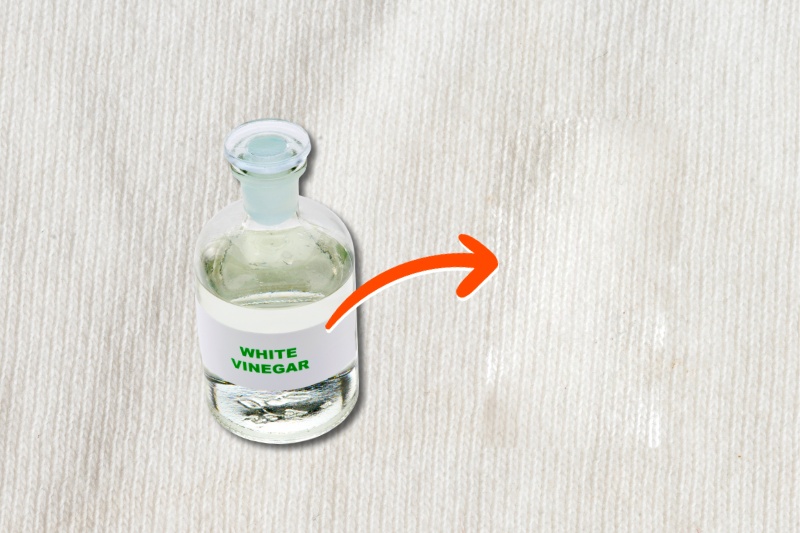
White vinegar is a versatile household item that can effectively tackle wood glue stains on fabric. The mild acidic properties of white vinegar help to break down the glue, which makes it easier to remove. Here are the steps for using this method:
- Prepare the vinegar solution by mixing equal parts white vinegar and water in a bowl.
- Immerse a clean cloth in the vinegar solution, ensuring it is thoroughly soaked.
- Wring the cloth to remove any excess liquid. You want the cloth to be damp but not dripping, as excess liquid can unnecessarily saturate the fabric.
- Place the damp cloth over the wood glue stain. Press down gently to ensure good contact between the fabric and the vinegar solution.
- Using gentle blotting motions, work from the outer edges of the stain towards the centre.
- Continue blotting until you notice the wood glue beginning to lift off the fabric. The process may take a few minutes to penetrate the glue properly.
- Once the wood glue stain has visibly lightened, rinse the fabric under cold running water. This will help remove the loosened glue and any residual vinegar solution.
- After rinsing, wash the fabric as you normally would.
Method 4: Iron
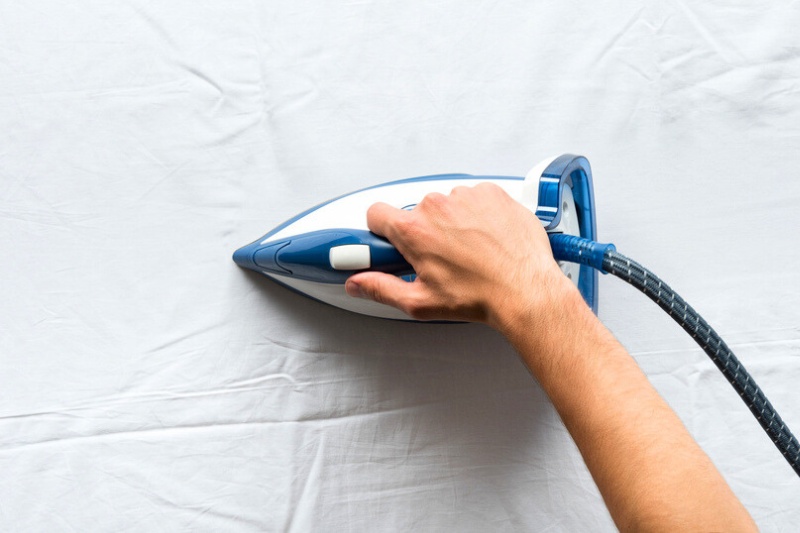
A technique employed by some professional dry cleaners involves using a hot iron to eliminate wood glue stains from clothing.
For this method, you will need an iron, a piece of cotton fabric, warm water, soap, and a clean cloth or scrubbing brush.
With your equipment in hand, follow these steps:
- Lay your garment on an ironing board and place the cotton fabric over the stained area.
- With the iron on its hottest setting, place it on top of the cotton fabric for a few seconds.
- Lift the cloth to check if the glue has liquified. If it has, rub the wood glue gently using a clean cloth and some warm, soapy water.
- Repeat this process until all the wood glue is removed, then wash the garment.
Commercial solutions for wood glue stains
Commercial cleaners and chemical-based products are harsher on clothes and not recommended for delicate fabrics.
However, they are effective at removing wood glue from garments and are certainly another option to consider:
Commercial cleaners for glue stains
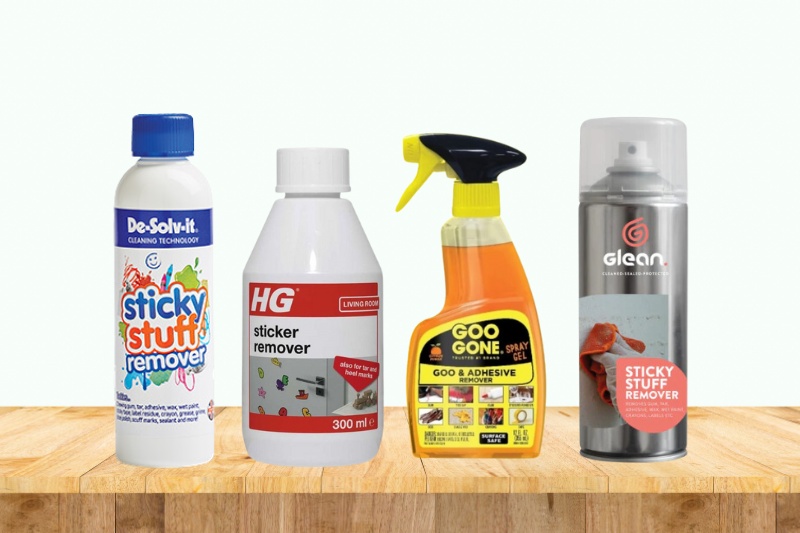
You can purchase commercial stain removers designed explicitly for adhesive stains or glue stains. Below are some examples that you can buy on Amazon.
- De.Solv.it Sticky Stuff Remover
- HG Sticker Remover
- Goo Gone Goo & Adhesive Remover
- GLEAN Sticky Stuff Remover
Importantly, not all these cleaners are intended for use on fabrics and clothes. Make sure you test the product on an inconspicuous area of the fabric first before applying any to the stain, and follow the instructions on the bottle for the best results.
Amyl acetate cleaners
Amyl acetate is an excellent option if you’re looking for a stronger cleaner to remove stubborn wood stains from clothes.
It can be found at most hardware stores and is more potent than homemade remedies. However, removing glue using this cleaner should be done with caution.
Amyl acetate is a powerful solvent, so wear gloves and keep the area well-ventilated.
If you want to give this wood glue removal method a go, here is a breakdown of the process:
- Wear rubber gloves to protect your skin and go to a well-ventilated area.
- Before applying amyl acetate directly to the wood glue stain, perform a spot test on a small, inconspicuous area of the fabric to ensure it doesn’t cause damage.
- Dip a clean, white cloth into the amyl acetate cleaner.
- Gently blot the wood glue stain with the amyl acetate-dampened cloth. Start from the outer edges of the stain and work towards the centre.
- Allow the amyl acetate to sit for a few minutes to help the solvent dissolve the glue.
- After letting it sit, continue blotting. You should notice the wood glue start to lift.
- If the stain persists, repeat the application of amyl acetate and the blotting process.
- Once the stain is gone or significantly reduced, rinse the fabric thoroughly under cold running water to remove any remaining amyl acetate and dissolved glue.
- Wash the garment in a cold water wash with mild detergent.
Professional Dry Cleaning Services
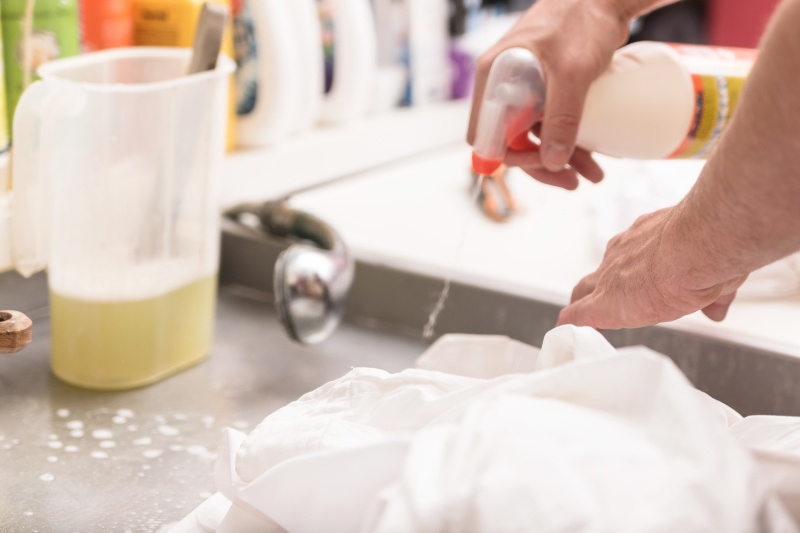
If you’re uncertain about tackling a wood glue stain on your own or if the fabric is particularly valuable, seeking the assistance of a professional dry cleaner is a wise choice. It offers the best chance of restoring your clothing to its original condition.
When dealing with stubborn or delicate stains like wood glue, the expertise of professional dry cleaners can make all the difference. They have access to specialised solvents and cleaning techniques that effectively treat adhesive-based stains.

Hannah has a passion for cleaning. She worked her way around Australia by cleaning hostels in exchange for free accommodation and used her cleaning skills to bag a job as a chalet host for a luxury ski company in France.
